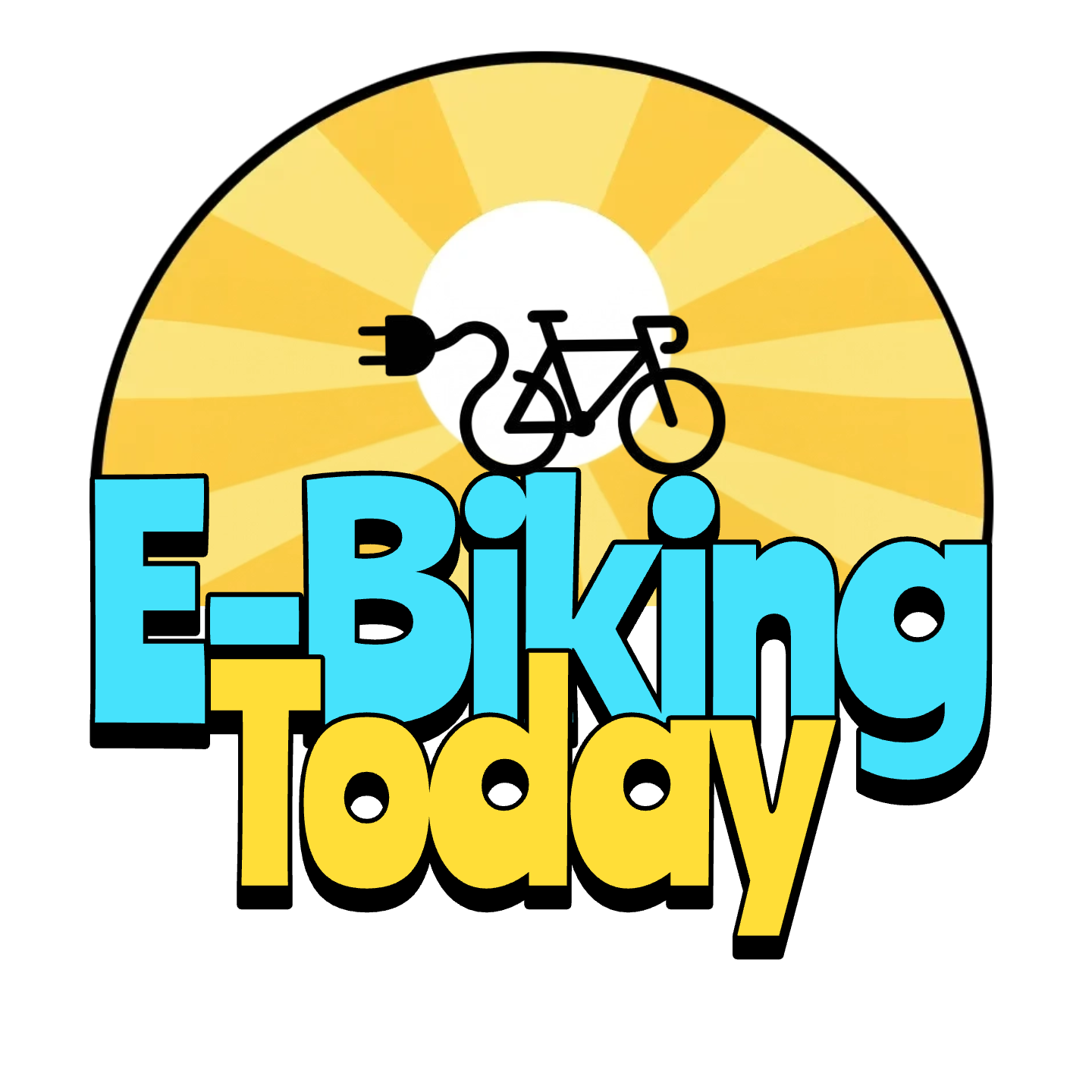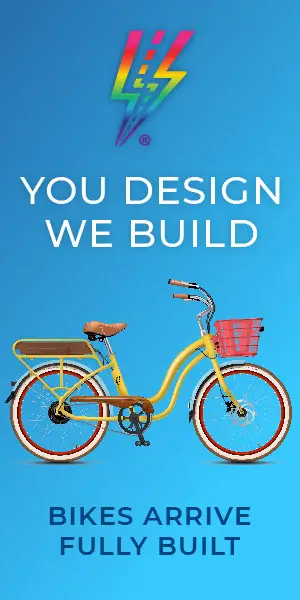Fantasizing about buying an electric bike? Before you do, there are some crucial things you need to know—things I wish someone had told me before I got into e-biking. So, I’ll share 15 things I’ve learned from my own experience, including mistakes I made, lessons I’ve picked up along the way, and tips to help you make the right decision.
Plus, I’m sharing five ways to get the most for your money when buying an e-bike, so keep reading!
15 Things No One Tells You About Electric Bikes
1. Not All E-Bikes Are Created Equal
When I started researching to buy my first e-bike, I assumed they were all pretty similar. But after riding a few, I quickly realized there’s a huge difference between pedal assist and throttle e-bikes, between a powerful motor and a weak one, and between a comfortable ride and one that feels like a brick on wheels.
🔹 My Tip: Don’t buy just based on looks, brand names, or because a friend loves theirs. Make sure the bike actually suits your riding style and needs. I’ve left you a couple links to help you learn more about e-bike differences under this video.
2. Battery Life Isn’t Always What’s Advertised
E-bike companies love to claim that their bikes get 50, 60, or even 100 miles per charge, but in reality, real-world range is usually much lower—especially if you use throttle mode a lot, ride on hills, attempt to conquer rough terrain, or weigh more than the 150 pound rider that e-bike brands use to test range.
🔹 My Tip: Lower your expectations a bit. Expect about 60-70% of the advertised range under normal conditions. If range is a priority, get a bike with a bigger battery than you think you’ll need.
3. Weight Matters – And You’ll Feel It
E-bikes are heavier than traditional bikes, and I found this out the hard way when I tried to lift one onto a bike rack for the first time. Some are nearly impossible to carry upstairs or even put on a bike rack. And if your battery dies mid-ride, pedaling a 70-pound bike can be exhausting.
🔹 My Tip: If you need to transport your bike often, stick with one weighing less than 60 pounds or whatever you can handle. And if you’ll be lifting it onto a rack, practice before you go on a big trip!
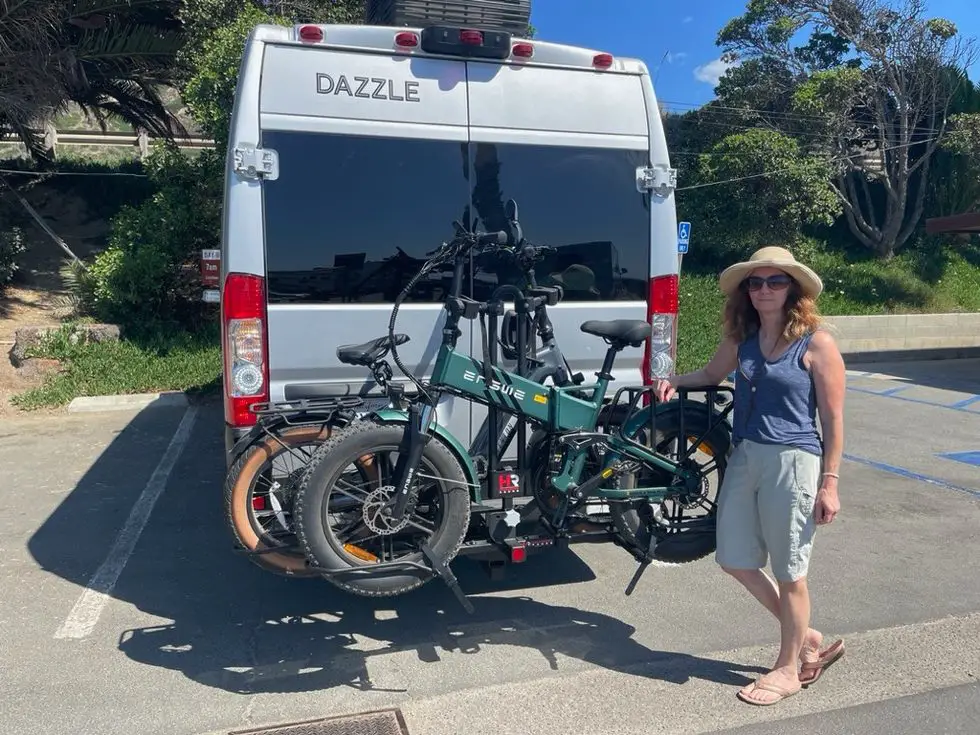
4. Maintenance Is Different From a Regular Bike
I assumed an e-bike would be as easy to maintain as a regular bicycle, but the motor, battery, and wiring add a whole new layer of complexity. While I still check my tire pressure and clean the chain, I also have to be careful about keeping electrical connections dry and updating firmware or an app on some models.
🔹 My Tip: Learn some basic e-bike troubleshooting, like how to reset your controller, check for loose connections, and properly store your battery in the winter.
5. You Might Need a Special License or Insurance
I was surprised to learn that some states and cities regulate e-bikes differently. Some require a license or registration for high-speed models, and certain bike paths don’t allow throttle-controlled e-bikes at all.
🔹 My Tip: Check your local e-bike laws before buying! It would be awful to get a bike you can’t legally ride where you live.
6. Comfort is More Important Than Speed
When I got my first e-bike, I was focused on speed and power, but after a few long rides, I realized that comfort is way more important. A bike with bad ergonomics can leave your wrists sore, back aching, and butt numb.
🔹 My Tip: Invest in a good seat and make sure the handlebars and pedals fit your body. Don’t just chase top speed!
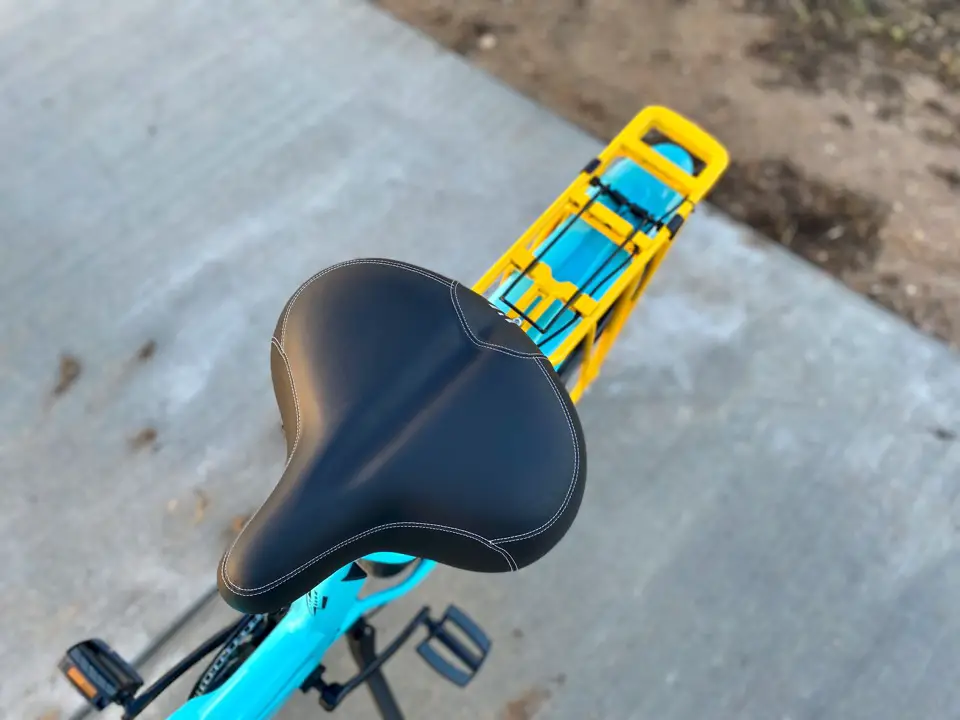
7. Cheap E-Bikes Can Be a Costly Mistake
I’ve tested budget e-bikes that seemed like a great deal, but many of them use cheap motors, weak batteries, and poor-quality brakes. The last thing you want is a bike that breaks down within months.
🔹 My Tip: Don’t go too cheap. Stick with reputable brands that offer solid warranties and replacement parts. Expect to spend between $1000 and $2000 for a quality ride.
8. E-Bikes Can Still Give You a Workout
A lot of people think e-bikes are just for lazy riders, but I actually ride more often and for longer distances because of pedal assist. You can still get a great workout by keeping the assist level low.
🔹 My Tip: If you want exercise, use pedal assist on level 1 or 2, and save throttle mode for steep hills or long rides. Or, turn off the assistance and you’ll quickly discover an intense workout.
9. Security is a Big Issue
After seeing countless stories of stolen e-bikes, I realized I needed a serious lock—not just a cable lock, but a heavy-duty U-lock or chain lock. And, two is always better than one.
🔹 My Tip: Get two solid locks and park in safe areas. If you can’t park where it’s safe or you’re especially worried, consider a GPS tracker hidden inside the frame or battery case. And consider ebike insurance. Is your investment worth about $100 a year?
10. E-Bike Accessories Are Essential
The first time I rode my e-bike at night, I realized the built-in light was weak and I could barely see the road. That’s when I learned how important good accessories are.
🔹 My Tip: Upgrade your lights, add mirrors, and get fenders if you plan to ride in wet conditions or on loose terrain. A few small upgrades can greatly improve safety and comfort.
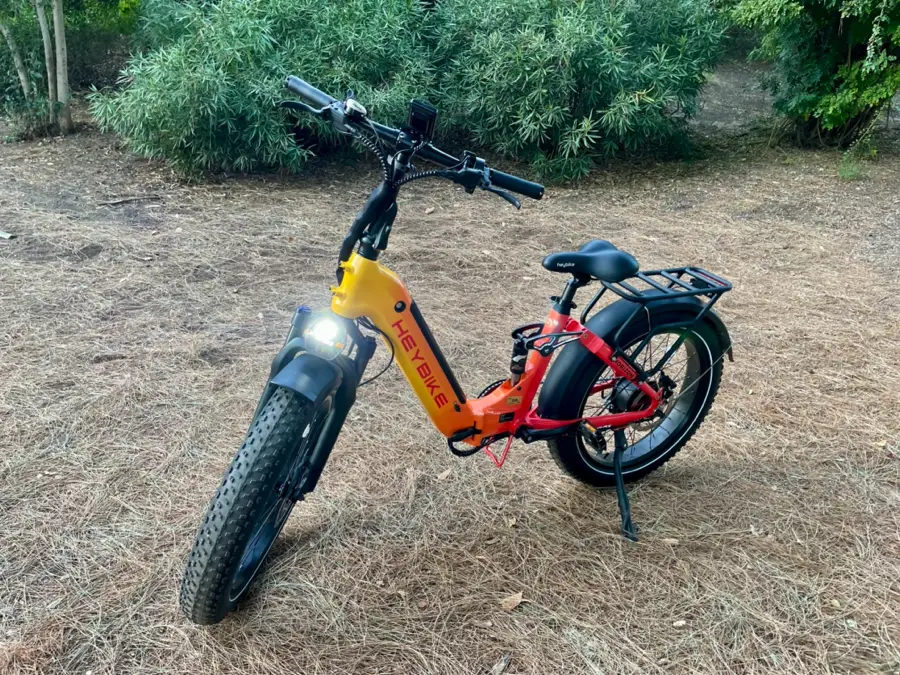
11. Hills and Wind Can Drain Your Battery Fast
Riding into strong wind feels like climbing a mountain, even on an ebike and hills will suck the life out of your battery if you’re not careful.
🔹 My Tip: If you live in a hilly area, get a bike with at least a 500W motor or a mid-drive motor, which handles hills better. Consider your size and weight before deciding a 500W motor is enough.
#12 of the 15 Things No One Tells You About Electric Bikes…
12. E-Bikes Can Be Hard to Repair Locally
Not all bike shops service e-bikes, and some brands don’t have spare parts available, which can leave you stranded.
🔹 My Tip: Before buying, check if a local shop services your brand or make sure the manufacturer has good customer support.
13. Your Charging Habits Affect Battery Lifespan
I’ve learned that how you charge your battery can make a huge difference in how long it lasts.
🔹 My Tip: Never let your battery fully drain to 0%, and avoid leaving it plugged in overnight. Charge it when it gets to around 20-30%. I have MANY more battery tips for you, which I’ve linked below the video.
14. Riding in the Rain? Know the Limits
Most e-bikes are water-resistant, not waterproof. Riding through deep puddles or in heavy rain can damage your motor or controller.
🔹 My Tip: If you ride in the rain, get a battery cover and make sure all your connections are sealed properly. Or spend more for an e-bike that is waterproof-rated. And, don’t ever use a high pressure hose to wash your ebike.
15. The Test Ride Is More Important Than the Specs
I used to think I could just look at the specs online and know which e-bike was best, but after testing and reviewing different models, I’ve realized that real-world feel is far more important than numbers on a page.
🔹 My Tip: Read or watch electric bike reviews! If possible, test ride at least three different e-bikes before deciding. What looks good on a website might not feel right when you ride it.
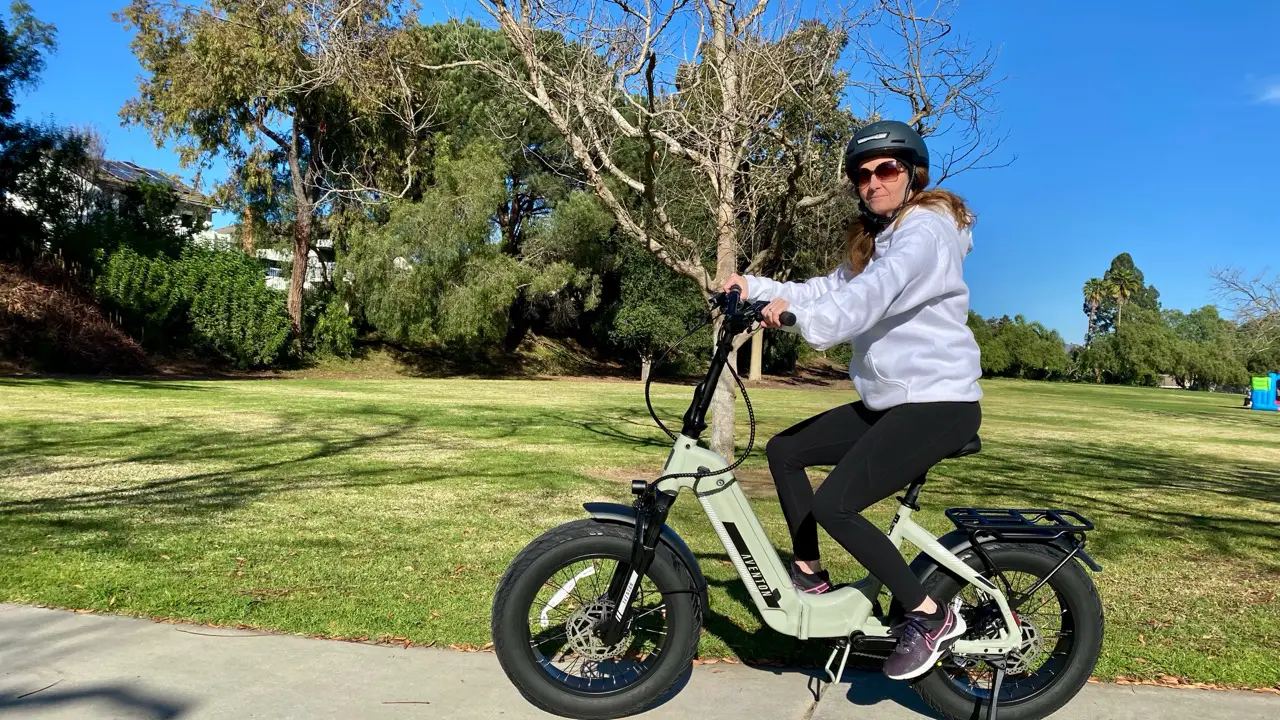
How to Maximize Your E-Bike Buying Budget
Now, after testing and reviewing e-bikes, I’ve learned a few smart ways to maximize your budget when buying an electric bike.
1. Prioritize Features That Matter Most to YOU
It’s easy to get caught up in fancy specs, but not every feature is necessary for every rider. Do you really need a 750W motor if you’re just commuting on flat roads? Or full suspension if you never go off-road?
Make a list of must-have features vs. nice-to-haves before you start shopping. Spend your money on the features you actually need, like a high-quality battery, good brakes, and a comfortable fit.
2. Buy from a Reputable Brand with Good Support
A cheap e-bike from a no-name brand might save you money upfront, but if it breaks down and you can’t get replacement parts, you’ll end up spending more in the long run. So, stick with brands that offer warranties, spare parts, and solid customer support.
3. Consider a Previous Year’s Model or Open-Box Deal
Just like with cars, last year’s e-bike models often go on sale when the new ones arrive. Many are still excellent bikes. Check for end-of-season sales, demo models, and clearance deals from reputable retailers. You could save hundreds of dollars!
4. Don’t Overspend on Battery Capacity If You Don’t Need It
It’s tempting to buy the biggest battery possible, but you might not need it. Instead, calculate how far you actually ride daily, then choose a battery that gives you at least 20% more range than you think you need.
5. Buy a Mid-Range Bike and Upgrade Parts Later
Instead of stretching your budget for the most expensive model, consider getting a solid mid-range e-bike and upgrading the saddle, tires, or lights later on.
Final Thoughts
Now that you know 15 things no one tells you about e-bikes, you can look forward to getting the best electric bike! Your rides will be tailored just for you, based on real life experience. Now, get out there and enjoy your ride! 🚴⚡
Be sure to check out this article for more helpful information: 13 Must Have E-Bike Tips You’d be Embarrassed to Miss!
